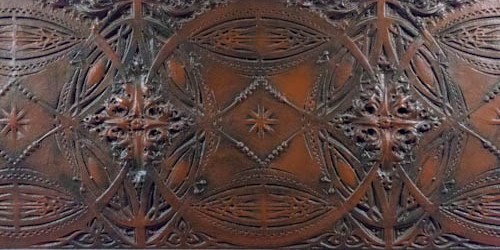
Extracted from the Cliff Dwellers – The History of a Chicago Cultural Institution by Henry Regnery (1990)
It was the purpose of the founders of The Cliff Dwellers to establish a place where people seriously interested in the arts, both professionally and, so to speak as committed observers, could come together in a congenial and friendly way. The moving spirit was the writer Hamlin Garland, who is remembered for such books as Main-Travelled Roads and Son of the Middle Border. He hoped, he said, to bring to Chicago something of the spirit he had found in the New York Players Club. Another factor in his determination to start such a club may well have been the situation of cultural life in Chicago at the time, which, after a promising start, was in one of its periods of decline.
During the last decade or so of the 19th century much was going on in Chicago. The Dial, which became a distinguished and influential literary journal, was started in Chicago in 1880. In 1894, Stone & Kimball launched the very successful and much imitated “little” magazine The Chap-Book and began to publish books of the highest quality, including several by Hamlin Garland and, besides, became a gathering place for people interested in art and literature. There were several other new publishing firms, Way and Williams for one, a number of good bookstores, including the famous McClurg store on Wabash Avenue, and Louis Sullivan was doing some of his most notable work in architecture. By 1907, when The Cliff Dwellers was founded, much that had seemed so promising a few years before had sputtered out: The Chap-Book died in 1898, not long after the demise of Way and Williams; Herbert S. Stone & Co., the successor of Stone & Kimball, gave up in 1905; the McClurg bookstore burned down in 1900; the Dial was beginning to go down hill and was soon to move to New York, where most of Chicago writers were to go, if they had not done so already; and Louis Sullivan was reduced to writing books. Sullivan received no important architectural commissions after 1900. It was doubtless with the hope of keeping alive, or bringing back to life, the cultural dynamism that had seemed to offer so much promise that Hamlin Garland, in 1907, founded The Cliff Dwellers.
Seventy-six years later, our club on the top of Orchestra Hall is still very much the same as when it served its first meal, except that an ample lunch of roast beef then cost 25 cents. We still have our fine view of Grant Park and Lake Michigan, and we still occupy the same inviting, unpretentious rooms designed by Howard Shaw. We honor the memory of Louis Sullivan, with a room containing examples of his work; we have a library of books written by members; our musician members, as well as others, give performances at our Club; our walls are made available to artists to display their work, and the conversation, or so it seems to us, is still lively. We may not be the great cultural center Hamlin Garland had hoped for, but we have tried to keep alive the spirit of the place, and we are aware of, and respect, the traditions we have inherited.



